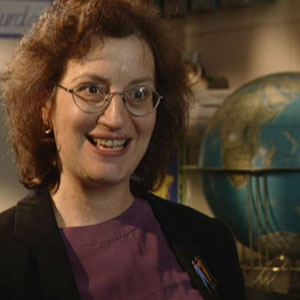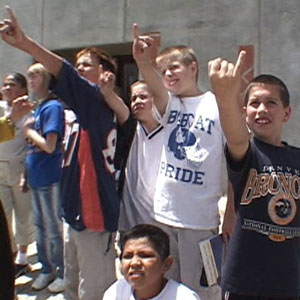Join us for conversations that inspire, recognize, and encourage innovation and best practices in the education profession.
Available on Apple Podcasts, Spotify, Google Podcasts, and more.
 “There’s so much I want a child to leave my class with. The first thing I want them to leave with is this feeling of confidence, that if they don’t understand something they can go out and work with what they have and try and understand and try to answer their questions. I want them to feel good enough about themselves that they realize it’s okay to have questions, that questions are good things.”
“There’s so much I want a child to leave my class with. The first thing I want them to leave with is this feeling of confidence, that if they don’t understand something they can go out and work with what they have and try and understand and try to answer their questions. I want them to feel good enough about themselves that they realize it’s okay to have questions, that questions are good things.”
When she was in high school, Carol Berlin thought science was incredibly boring. “I remember… being totally disconnected to anything going on in science. We read a chapter, and we answered the questions at the end of the chapter. If you could read, you could do it, but that didn’t mean you understood it.” She says that changed when she had children of her own, particularly her son, whose first word, she jokes, must have been “why” — “he was very curious about science and I started exploring with him, and that’s really when I started teaching science.”
Carol decided to become a teacher, and when she returned to college to earn her certification, she focused on science education. “I took a science methods course at Wheelock College, with two fabulous teachers who inspired me. They taught me that you don’t have to have the answers, that you want the children to ask questions. Very powerful ideas… and when I started teaching, I felt very empowered to teach science.” For the past seven years, Carol has been teaching third grade at the Charlotte Dunning School, in Framingham, Massachusetts.
 Lesson at a Glance:
Lesson at a Glance:
Curriculum: Activity designed by Carol Berlin
(download the lesson plan as an Adobe PDF document)
Grade: Third
Topic: Scale model of the Solar System
Carol is currently working on a solar system unit. Her class just finished making scale models of the size of the planets, including a scale model between the Sun and the Earth. For the video, Carol planned to turn the class’s attention to the distances between the planets. “I have a model of the solar system worked out that is scaled to a model of the Sun that is smaller than a marble,” explains Carol. The model is so large, she adds, that Pluto isn’t able to fit on the playground.
At the beginning of the lesson, Carol distributed paper to her students and asked them to draw a scale model of the solar system with as much detail as they could include. After discussing their drawings in groups, she took the class out to the playground.
Once she established the Sun’s position, Carol asked her students to predict the relative location of the planets by standing where they thought they would be. “That provides them with a place to confront their own misconceptions, a chance to have an ‘ah-ha!’ moment in the lesson,” explains Carol. She adds, “The kids are always surprised… by the closeness of the inner planets and how spread out the outer planets are. They’re amazed by that.”
Carol also discussed the imperfections of the model with her students, who noted that the planets don’t ever line up and that the Solar System is not two-dimensional. Nevertheless, like so many teachers who teach Earth and space science, Carol notes that models are important because they give children the most direct interactions with the subject matter that they are likely to have.
Carol was pleased with the results of the lesson, noting that the children had developed a better sense of how vast the solar system is. She told the children that relative to the marble she used to represent the Sun, Jupiter would be the size of a grain of sand. “That allowed them to see how much space is in space,” Carol observed. “And hopefully they ’ll take away this sense of huge distances.”